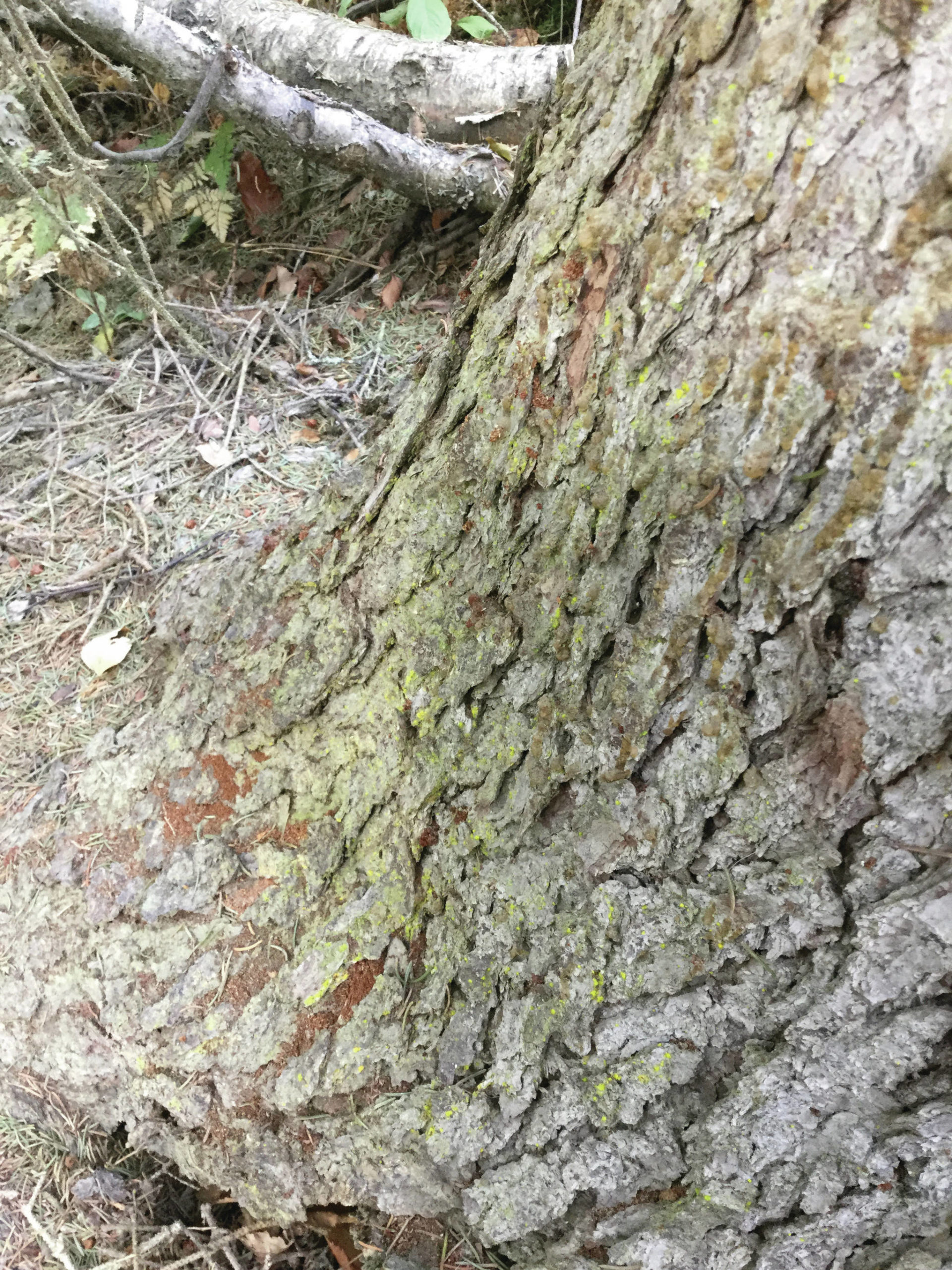Spruce beetles are at it again. I am sad to see large trees in Soldotna with patches of missing bark that indicate woodpeckers are finding beetle larva.
With the snowmelt, I check the trunks of the spruce trees in my yard for signs of beetle attack. Spring is a critical time. If you want to try to slow the spread of hungry beetles, you need to act before they emerge and disperse.
There are 64 species of bark beetles that occur in Alaska. Most species are secondary pests that attack dead and downed wood. A few species can kill entire stands of healthy trees.
Dendroctonus rufipennis, the species cycling up on the Kenai Peninsula, is a tree killer. Spruce beetles are tiny (about one-quarter of an inch long) and upon close inspection are distinguished by their club-shaped antennae and oval-shaped eyes.
Bark beetles lay eggs in, live in and consume phloem, which is the inner tree bark. The inner bark is the tree’s food delivery system. It is where sugars and other materials are transported in sap.
Spruce beetles co-evolved with spruce in North America. Beetles have been a selective pressure on spruce for about 10,000 years, so spruce have evolved chemical and other defenses to survive beetle attack.
Beetles are always present in the background of our boreal forests. When their population numbers are low, beetles choose downed or smaller diameter trees because they would die from being “sapped out” of large, healthy trees.
Here, spruce beetles usually have a two-year life cycle. Anytime from mid-May to mid-July, adult beetles emerge from under the bark of infested trees when the temperature consistently registers around 60 degrees.
The adults fly out to find the next place where they can bore into the inner bark to lay eggs. The eggs hatch later in the summer and the larvae live in and eat the inner bark all summer.
After overwintering, the larvae transform into a beetle the following summer. The new adults remain in the tree for a second summer and winter. They will be ready to fly and start the next generation the following spring.
Beetle populations can cycle up to epidemic numbers when host materials are available and conditions are right. Warm summers allow beetles to develop more rapidly and shorten their life cycle. Warm summers also cause the trees to be drought stressed, which makes them more susceptible to beetle attack.
When beetle population numbers cycle high, they can work together to overcome the defenses of big trees. Beetles use pheromones to invite others to mass attack and girdle the tree before the tree can kill them with sap.
Beetles began ramping up in 2016 in the Matanuska-Susitna valleys and Northern Kenai Peninsula. The area of attack has expanded south to the Kenai River. As many of us remember, the Kenai Peninsula was the epicenter of a beetle outbreak in the 1990s.
For land managers, treatments to protect trees cannot be applied at landscape scales because they are expensive and must be applied to individual trees. For homeowners, there may be opportunities to protect trees by watering healthy trees, reducing the habitat available to beetles in your yard, and even some pesticide treatments to consider.
However, action must occur before the tree is infested.
Now, before the beetles fly, is a great time to figure out the status of your trees. Infested trees can have boring dust, which looks like sawdust, at their base (see picture). You may see holes in the bark when beetles have exited or bark coming off.
Pitch tubes form where the trees try to sap out the beetles (see picture). Needles will change from green, to red, to gray as the tree dies.
If you find evidence of spruce beetles, the tree likely cannot be saved. The best course of action is to safely remove the tree before more beetles disperse out. Consider removing, chipping, milling or burying the infested material.
If you decide to use the firewood, debarking the tree before stacking the wood will make the downed tree inhospitable to beetles. Similarly, consider debarking any beetle-killed wood you bring home to avoid spreading the infestation into your yard.
For more information about spruce beetles visit www.alaskasprucebeetle.org.
Dr. Magness is a landscape ecologist at Kenai National Wildlife Refuge. Find more information at http://kenai.fws.gov or http://www.facebook.com/kenainationalwildliferefuge.
By DAWN ROBIN MAGNESS
Kenai National Wildlife Refuge

